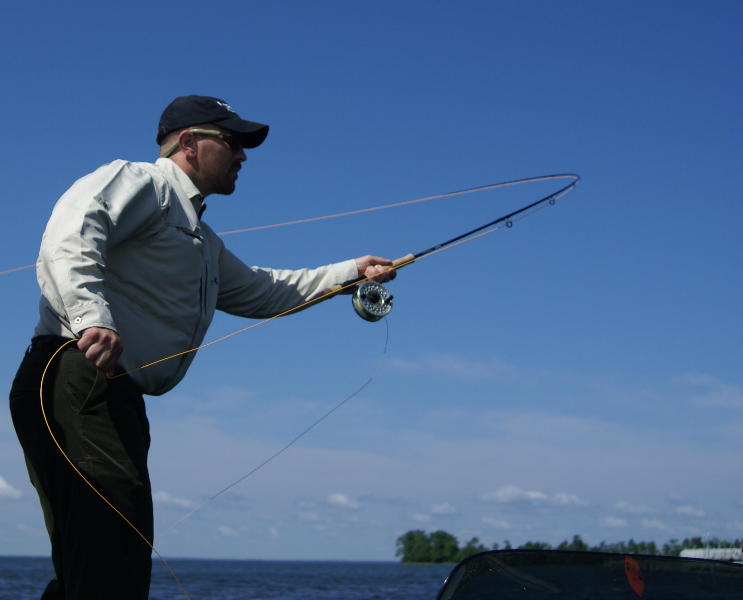|
|
Posts: 11
| Muskie fisherman looking for some opinions; pros & cons on linking trolling motor mounted gps/sonar with counsel mounted gps/sonar. | |
| | |

Posts: 1663
Location: Kodiak, AK | I keep them separate. That said, I pretty much only fish big open water and don't follow that much un the way of sharp contours. But even if I did, I want manual control of my TM and not it running off the sats. GPS controls, the TM location...not the location or orientation of the boat. The TM head could be in the right spot, but wind or current depending, the boat could be perpendicular, backwards or even over the structure. you're trying to fish. | |
| | |
Posts: 117
| Are you talking about a gps-controlled trolling motor linked to your sonar/gps unit, or as I understood the question, are you talking about linking your bow and console sonar/gps units?
As far as I know there is no disadvantage to linking bow and console electronics. Advantage is the ability to mark fish or structure on the console unit as you drive the boat, and then have those waypoints show up on both sonars so you can fish them from the bow. If you only troll its probably not an advantage, but if you mainly cast it's a game-changer, especially with side-imaging sonar.
Some sonars also allow you to share map chips this way.
| |
| | |
Posts: 1209
| Link them if it's cost efficient... I fish off shore and if I have a waypoint on one unit it may as well be on both. But I use separate transducers | |
| | |
Posts: 11
| Good points...I primarily cast so both units are in operation and the shared way points would be helpful when the TM isn't engaged. | |
| | |
Posts: 117
| "Standard" rig is a console and bow sonar, each with their own transducer, linked together. Waypoints are shared between the two units whether the trolling motor is engaged or not. I have heard f people hsaring transducers, but other than an equipment malfunction I cant imagine why anyone would want to do that--you want each transducer to be right next to the gps antenna for each unit so you are actually putting a waypoint as close to the actual structure/fish you see as possible.
Ponder this--with side imaging you idle over a flat and see a rockpile 60 feet to the side of the boat. You use the cursor to slide over on the screen to mark the rockpile, and keep idling down the flat to mark other rocks, drops, weedlines, etc. Now stop the boat, turn around and use the trolling motor from the bow to navigate to and fish each of the waypoints, without having to drive the boat over it to find it again with the bow unit, even if its deeper water and you cant see it and there are no landmarks to reference off of. If you DONT have linked sonars you are forced to guess, drive the boat dirctly over something to put a buoy on it, etc if you want to fish it. The opposite also works--find a spot from the bow and next tim you want to fish it it's right there on your console gps so you can go right to it. Once I figured this out and how useful it is, you couldnt pay me to fish with non-linked sonars.
Assuming you have bow and console sonars that are CAPABLE of being linked, the cost to link them is negligible until you start getting to 3-sonar systems and more complicated stuff. On my sonars it's simply one ethernet cable that screws into the back of each sonar, that's it.
Edited by Macintosh 4/6/2016 10:01 PM
| |
| | |
Posts: 1209
| I have my bow and console hds's on the same transducers (glassed in and si) but I have a 959 on the bow as well. Run duel maps and sonars so I can see how deep the back of the boat is vs the bow and even lake to other side of the lake map quality switches. Also running anchors I don't have to as copilot how deep the back is. | |
| |
|
 Linking boat electronics
Linking boat electronics Linking boat electronics
Linking boat electronics